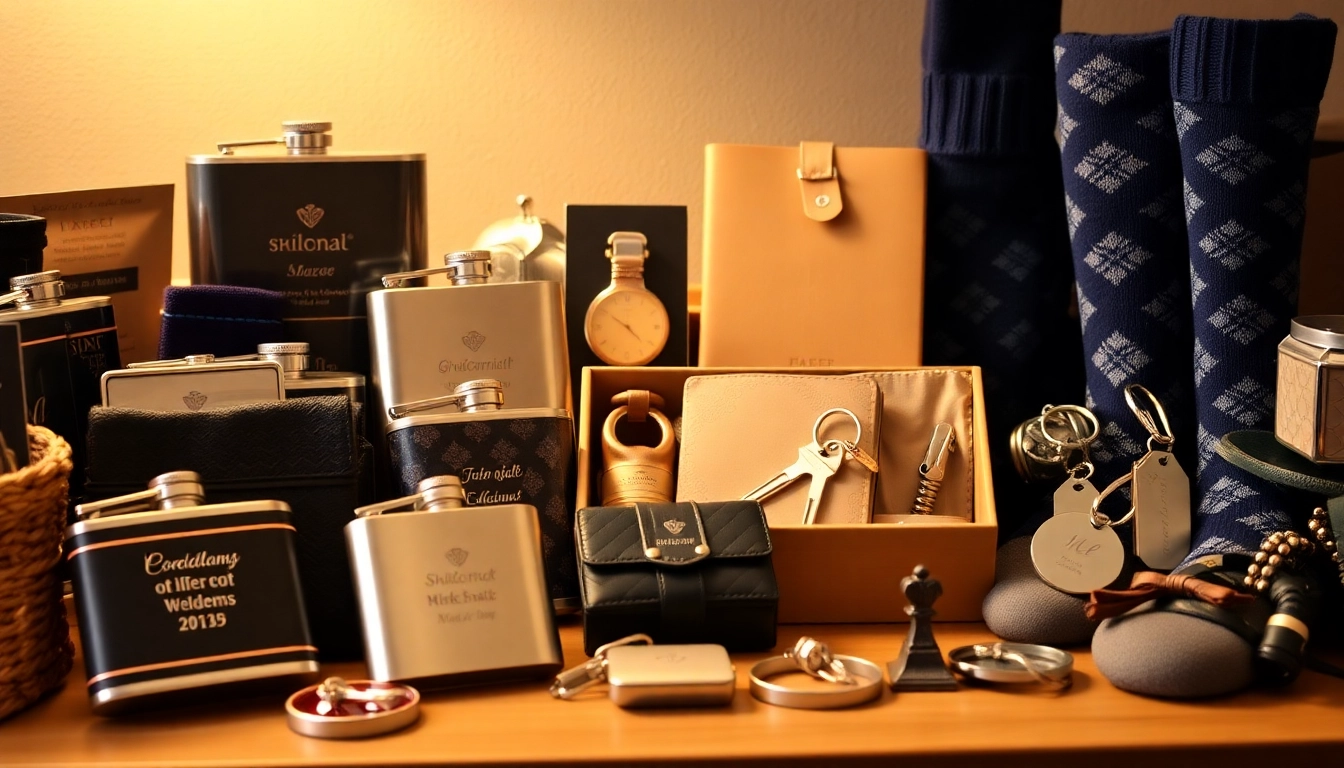Understanding Vapor Tight Light Fixture
What is a Vapor Tight Light Fixture?
A Vapor Tight Light Fixture is a lighting solution specifically designed to operate effectively in environments where moisture, dust, and other harsh conditions are prevalent. These fixtures are constructed to be airtight, ensuring that water and dust cannot penetrate the housing. This superior protection makes them ideal for various industrial, commercial, and outdoor applications where standard light fixtures may fail. Unlike traditional fixtures, vapor tight lights are built to endure extreme conditions, including exposure to chemicals and damp environments, making them indispensable in warehouses, parking garages, food processing plants, and even marine applications.
Key Features of Vapor Tight Light Fixture
Vapor Tight Light Fixtures are distinguished by several notable features:
- Airtight Construction: The sealed design prevents moisture and dust ingress, ensuring reliability and performance.
- Durable Materials: Many of these fixtures are made with impact-resistant polycarbonate or fiberglass, providing longevity in tough environments.
- Variety of Light Sources: Options typically include LED, fluorescent, and other energy-efficient lighting technologies, catering to different energy needs.
- Energy Efficiency: Given their capability of using LED technology, vapor tight fixtures are often highly efficient, reducing overall energy consumption.
- Wide Range of Applications: Adaptable to both indoor and outdoor settings, these fixtures suit diverse environments—from cold storage to outdoor parking lots.
Common Applications for Vapor Tight Light Fixture
Vapor Tight Light Fixtures are utilized across numerous sectors. Common applications involve:
- Industrial Settings: Manufacturing plants where dust, humidity, and chemicals are prevalent rely on these fixtures to maintain visibility.
- Food and Beverage Processing: The fixtures are suitable for environments that require strict hygiene standards and frequent cleaning.
- Parks and Recreation Areas: Outdoor parks, sport facilities, and recreational areas benefit from the weatherproof aspect of these fixtures.
- Parking Structures: Secure and illuminated parking areas use vapor tight fixtures to provide safety without compromising on light performance.
- Cold Storage Facilities: These fixtures are adept in maintaining lighting in low-temperature environments, which is vital for food preservation.
Benefits of Using Vapor Tight Light Fixture
Energy Efficiency of Vapor Tight Light Fixture
One of the primary benefits of utilizing Vapor Tight Light Fixtures is their energy efficiency. Many of these fixtures employ LED technology, which has become synonymous with low energy consumption without sacrificing light output. LED vapor tight fixtures consume significantly less wattage than traditional fluorescent or incandescent lights, resulting in lower electricity bills and reduced environmental impact. Additionally, many models come with features such as dimming capabilities and motion sensors that further enhance energy savings by automatically adjusting light levels according to occupancy.
Long Lifespan and Low Maintenance
Vapor Tight Light Fixtures are designed for longevity. The typical lifespan of LED models can exceed 50,000 hours, drastically reducing the need for frequent replacements. Furthermore, their sealed nature contributes to lower maintenance requirements. With minimal exposure to dust and moisture, maintenance crews can spend less time cleaning and replacing bulbs, reducing downtime and associated labor costs. This factor is particularly crucial in industrial settings where every hour of functionality matters.
Safety Standards and Compliance
Safety is paramount in any lighting solution. Vapor Tight Light Fixtures are often designed to meet stringent industry standards, ensuring compliance with regulations pertaining to safety, sustainability, and performance. These fixtures are tested and certified to confirm their capability to function effectively in adverse conditions, making them a safe choice for environments that can pose hazards to traditional lighting. Their construction often includes shatterproof materials, enhancing safety in high-traffic areas.
Choosing the Right Vapor Tight Light Fixture
Factors to Consider When Selecting a Vapor Tight Light Fixture
When selecting a Vapor Tight Light Fixture, several factors should be taken into account to ensure optimal performance:
- Environment: Analyze the specific environment (indoor vs. outdoor) to determine the necessary weatherproof rating.
- Light Output: Assess lumens per watt to find a fixture that meets your illumination needs efficiently.
- Wattage: Consider the wattage options based on space and brightness requirements without compromising energy efficiency.
- Mounting Options: Evaluate how the fixture will be installed, considering ceiling height and type of surface.
- Regulatory Compliance: Ensure the fixture adheres to applicable safety and environmental regulations.
Comparing Different Types of Vapor Tight Light Fixture
Vapor Tight Light Fixtures come in various forms and configurations. Understanding the differences can help in making an informed decision. Common options include:
- LED Fixtures: Known for high energy efficiency and long lifespan, offering excellent light quality while minimizing power usage.
- Fluorescent Fixtures: Often less expensive initially but tend to require more frequent replacements than LEDs.
- Incandescent Fixtures: Generally used less frequently due to inefficiency, still applicable in areas with infrequent use where immediate light is necessary.
- Integrated LED Fixtures: These fixtures come with built-in LEDs, eliminating the need for changing bulbs and enhancing durability.
Installation Considerations for Vapor Tight Light Fixture
Successful installation of Vapor Tight Light Fixtures is key to achieving desired performance. Considerations include:
- Mounting Height: Higher ceilings may require fixtures with higher lumen outputs or specialized optics to ensure light reaches the desired areas.
- Accessibility: Select fixtures that can be easily accessed for repair or maintenance without disproportionate risk or effort.
- Wiring Provisions: Ensure that the existing wiring meets the fixture’s specifications, taking into account any necessary upgrades.
- Environmental Factors: Evaluate surroundings for potential hazards (like extreme temperatures or chemical exposure) that could affect fixture performance.
- Compliance with Local Codes: Adhere strictly to local electrical codes and standards to avoid legal repercussions or safety hazards.
Maintaining Your Vapor Tight Light Fixture
Best Practices for Care and Maintenance
While Vapor Tight Light Fixtures are designed for low maintenance, adopting best practices can extend their lifespan and ensure optimal operation:
- Regular Inspections: Schedule periodic inspections to check for signs of wear, damage, or light output issues.
- Cleaning: Clean the fixture exterior using a damp cloth occasionally to prevent the buildup of dust and grime that can impede performance.
- Testing: Routinely test for functionality to ensure the fixture meets safety and performance standards constantly.
- Prompt Repairs: Address any identified issues immediately to avoid escalating problems that could lead to fixture failure.
Troubleshooting Common Issues with Vapor Tight Light Fixture
As with any lighting solution, issues may arise. Here are common problems and solutions:
- No Light Output: Check for tripped circuit breakers or blown fuses. If neither is the issue, consider the lamp or ballast may need replacing.
- Flickering or Dimming: This can often signify electrical problems. Ensure all connections are tight, and components are functioning properly.
- Moisture Accumulation: Inspect seals to ensure they are intact. Damaged seals may require the fixture to be replaced.
- Uneven Lighting: This could indicate bulb issues or reflector misalignment. Review and adjust or replace components as necessary.
When to Replace Your Vapor Tight Light Fixture
Determining when to replace a Vapor Tight Light Fixture involves considering several factors:
- Age and Usage: Consider fixtures nearing their lifespan (often 50,000 hours for LEDs) as candidates for replacement.
- Performance Decline: When light output diminishes significantly or flickering becomes frequent, evaluation for replacement is essential.
- Physical Damage: If the fixture is compromised or has significant wear that could lead to safety hazards.
- Technological Advances: Keeping pace with lighting technology may incentivize replacement for enhanced energy efficiency or improved lighting quality.
Future Trends in Vapor Tight Light Fixture Technology
Innovations in Lighting Technology
The lighting industry continues to evolve rapidly, contributing to advancements in Vapor Tight Light Fixtures. Innovations include:
- Smart Lighting: Integration of IoT devices allowing for monitoring, control, and automation, enhancing energy savings and performance.
- Human-Centric Lighting: Developed to optimize light temperature, promoting well-being and productivity in work areas.
- Advanced Sensors: Motion and light sensors for automatic brightness adjustments based on surrounding conditions, enhancing efficacy.
- Sustainable Materials: Use of recyclable or biodegradable materials in fixture construction, reducing environmental impact.
Environmental Considerations and Sustainable Design
Sustainability is becoming increasingly central to lighting design. Manufacturers are focusing on:
- Reduced Energy Consumption: Continued emphasis on LED technology promotes reductions in energy use.
- Longer Lifespan Products: Fixtures with extended lifecycles reduce landfill waste associated with lighting components.
- Recyclability: An increase in the use of recyclable materials in fixture designs enables better waste management practices.
- Compliance with Green Standards: Adherence to green building certifications and standards to encourage environmentally responsible construction.
The Future of Vapor Tight Light Fixture in Industrial Settings
As industries evolve toward a more safety-focused and efficient mindset, Vapor Tight Light Fixtures will play a vital role. With their robust features and adaptability, these fixtures are positioned to cater to emerging needs such as:
- Increased Automation: As industrial environments become more automated, lighting control systems will integrate seamlessly to optimize energy use.
- Greater Focus on Safety: Compliance with higher safety standards demands reliable lighting that prevents workplace accidents.
- Enhanced Productivity: Superior lighting solutions contribute to improved visibility, thus directly impacting worker safety and efficiency.
- Adaptability to New Technologies: New advances in lighting technologies will see Vapor Tight Light Fixtures adapt to meet the requirements of innovative lighting methods.



